دانلود مقاله مروری بر فناوریهای کاهش آلودگی برای موتورهای دیزل وسایل دریایی با سرعت کم و متوسط و پتانسیل آنها برای بازیافت حرارت اتلافی A review of emissions reduction technologies for low and medium speed marine Diesel engines and their potential for waste heat recovery
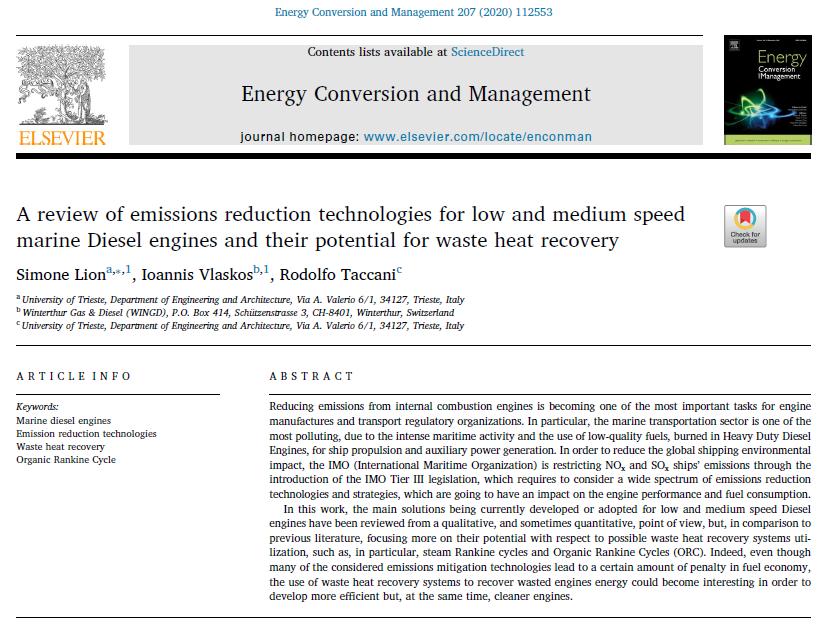
Reducing emissions from internal combustion engines is becoming one of the most important tasks for engine
manufactures and transport regulatory organizations. In particular, the marine transportation sector is one of the
most polluting, due to the intense maritime activity and the use of low-quality fuels, burned in Heavy Duty Diesel
Engines, for ship propulsion and auxiliary power generation. In order to reduce the global shipping environmental
impact, the IMO (International Maritime Organization) is restricting NOx and SOx ships’ emissions through the
introduction of the IMO Tier III legislation, which requires to consider a wide spectrum of emissions reduction
technologies and strategies, which are going to have an impact on the engine performance and fuel consumption.
In this work, the main solutions being currently developed or adopted for low and medium speed Diesel
engines have been reviewed from a qualitative, and sometimes quantitative, point of view, but, in comparison to
previous literature, focusing more on their potential with respect to possible waste heat recovery systems utilization,
such as, in particular, steam Rankine cycles and Organic Rankine Cycles (ORC). Indeed, even though
many of the considered emissions mitigation technologies lead to a certain amount of penalty in fuel economy,
the use of waste heat recovery systems to recover wasted engines energy could become interesting in order to
develop more efficient but, at the same time, cleaner engines.
دانلود مقاله مروری بر تاثیر سوخت بیو دیزل بر طول عمر موتورهای اشتعال جرقه ای Impact of Bio-diesel fuel on Durability of CI Engines – A Review
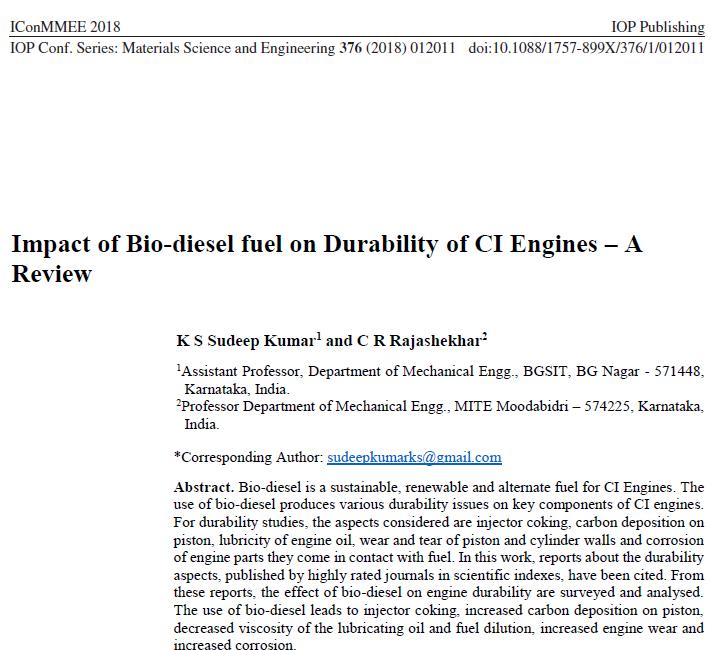
Bio-diesel is a sustainable, renewable and alternate fuel for CI Engines. The
use of bio-diesel produces various durability issues on key components of CI engines.
For durability studies, the aspects considered are injector coking, carbon deposition on
piston, lubricity of engine oil, wear and tear of piston and cylinder walls and corrosion
of engine parts they come in contact with fuel. In this work, reports about the durability
aspects, published by highly rated journals in scientific indexes, have been cited. From
these reports, the effect of bio-diesel on engine durability are surveyed and analysed.
The use of bio-diesel leads to injector coking, increased carbon deposition on piston,
decreased viscosity of the lubricating oil and fuel dilution, increased engine wear and
increased corrosion.
دانلود مقاله مروری بر مقررات، وضعیت کنونی، اثرات و راهکارهای کاهش آلودگیهای موتورهای دیزلی دریایی A review on regulations, current status, effects and reduction strategies of emissions for marine diesel engines

Marine diesel engines, which provide main power source for ships, mainly contribute to air pollution in ports
and coastal areas. Thus there is an increasing demand on tightening the emission standards for marine diesel
engines, which necessitates the research on various emission reduction strategies. This review covers emission
regulations and emission factors (EFs), environmental effects and available emission reduction solutions for
marine diesel engines. Not only the establishment of the emission control areas (ECAs) in the regulations but also
many experiments show high concerns about the sulfur limits in fuels, sulfur oxides (SOx) and nitrogen oxides
(NOx) emissions. Research results reveal that NOx emissions from marine diesel engines account for 50% of total
NOx in harbors and coastal regions. Sulfur content in fuel oil is an important parameter index that determines
the development direction of emission control technologies. Despites some issues, biodiesel, methanol and liquefied
nature gas (LNG) play their important roles in reducing emissions as well as in replacing fossil energy,
being promising fuels for marine diesel engines. Fuel-water emulsion (FWE) and exhaust gas recirculation (EGR)
are effective treatment option for NOx emissions control. Common rail fuel injection is an effective fuel injection
strategy to achieve simultaneous reductions in particulate matter (PM) and NOx. Selective catalytic reduction
(SCR) and wet scrubbing are the most mature and effective exhaust aftertreatment methods for marine diesel
engines, which show 90% De-NOx efficiency and 95% De-SOx efficiency. It can be concluded that the integrated
multi-pollutant treatment for ship emissions holds great promise.
دانلود مقاله مروری بر استراتژیهای مختلف برای صرفه جویی در مصرف انرژی سیستمهای تهویه مطبوع A review of different strategies for HVAC energy saving
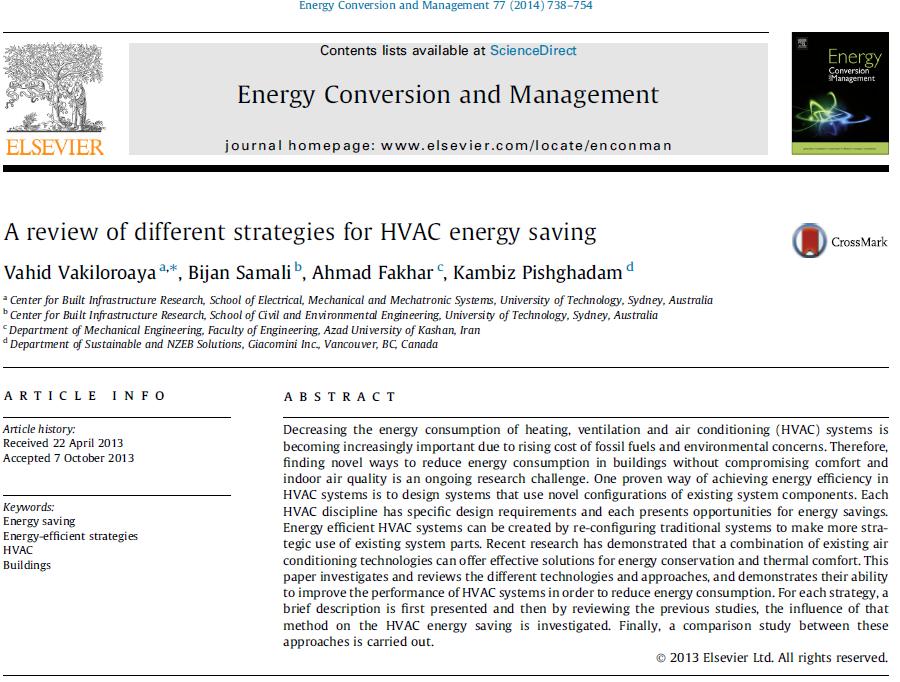
Decreasing the energy consumption of heating, ventilation and air conditioning (HVAC) systems is
becoming increasingly important due to rising cost of fossil fuels and environmental concerns. Therefore,
finding novel ways to reduce energy consumption in buildings without compromising comfort and
indoor air quality is an ongoing research challenge. One proven way of achieving energy efficiency in
HVAC systems is to design systems that use novel configurations of existing system components. Each
HVAC discipline has specific design requirements and each presents opportunities for energy savings.
Energy efficient HVAC systems can be created by re-configuring traditional systems to make more strategic
use of existing system parts. Recent research has demonstrated that a combination of existing air
conditioning technologies can offer effective solutions for energy conservation and thermal comfort. This
paper investigates and reviews the different technologies and approaches, and demonstrates their ability
to improve the performance of HVAC systems in order to reduce energy consumption. For each strategy, a
brief description is first presented and then by reviewing the previous studies, the influence of that
method on the HVAC energy saving is investigated. Finally, a comparison study between these
approaches is carried out.
دانلود مقاله مروری بر ملزومات سیستمهای تهویه در مقررات انرژی ساختمان A review of HVAC systems requirements in building energy regulations

Building energy regulations, also referred to as building energy codes, emerged in the 1970s as an essential
tool for improving energy efficiency and minimising energy consumption in buildings. Basically they aim
at setting minimum energy efficiency requirements to achieve energy efficient design in new buildings.
This paper analyses the development of building energy codes concerning Heating, Ventilation and Air-
Conditioning (HVAC) energy efficiency, along with their scope and compliance paths. The paper focuses on
the synthesis of energy efficiency requirements on HVAC systems of non-residential buildings in different
regulations. Critical issues for the development of prescriptive and performance regulatory paths for this
type of systems in non-residential buildings are discussed in order to improve the understanding of HVAC
energy efficiency topics and to provide policy makers with a menu of options to strengthen the HVAC
section of building energy codes.
دانلود مقاله مروری بر اجزاء یک سیستم تهویه مطبوع با جریان مبرد متغیر برای کاربردهای خانگی A Review of Variable Refrigerant Flow HVAC System Components for Residential Application
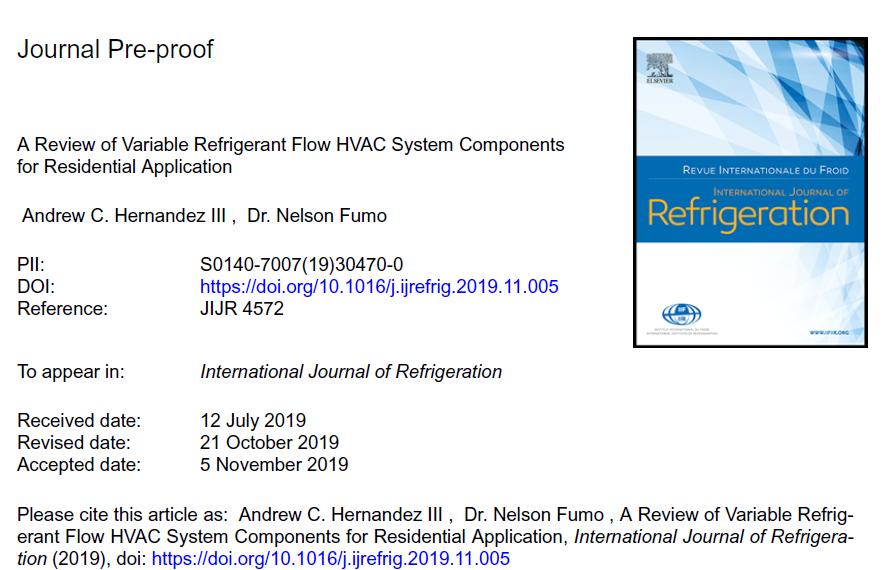
A variable refrigerant flow (VRF) classification is a multi-split Heating, Ventilation and Air
Conditioning (HVAC) system that controls refrigerant flow to control separable zones to
residential consumer’s needs. VRF specific components regulate refrigerant flow control for
system performance and reliability. The objective of this review is to recognize the VRF system
components that affect various aspects of operation and performance. The investigate of
preceding experimentation will better assist in the direction of future progress as development of
expansive residential VRF systems are still in primary phases. Findings show that specific testing
through different compressor arrangements, electronic expansion valve (EEV) positioning, and
air flow operations affect performance and thermal comfort. The system responsiveness and
sensitivity are related to the quantity of indoor evaporators that are connected to the system.
دانلود مقاله مروری بر تولید انتروپی در میکرو کانالها A review of entropy generation in microchannels

در این مقاله مروری بر تحقیقات قبلی دربارۀ تولید انتروپی در میکروکانالها انجام گرفته است.
دانلود مقاله روشهای افزایش انتقال حرارت و فاکتور عملکرد آنها The heat transfer enhancement techniques and their thermal performance factor

در این مقاله روشهای افزایش انتقال حرارت تشریح شده است.
دانلود مقاله مبدلهای حرارتی (تبادلگرهای گرمای) جدید از نوع فوم فلزی سبک Novel Lightweight Metal Foam Heat Exchangers
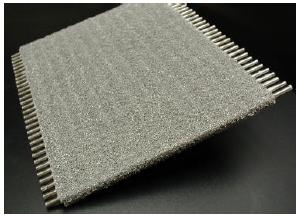
در این مقاله دربارۀ تبادلگرهای گرما از نوع فوم فلزی و سبک وزن صحبت شده است. مطالعه آن برای دانشجویان کارشناسی ارشد و دکترا اکیدا توصیه می شود.
دانلود مقاله مصرف آب کولرهای تبخیری Evaporative cooler water use
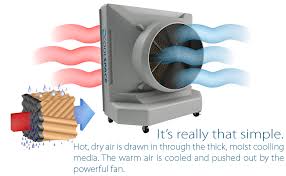
در این مقاله انواع کولرهای تبخیری تشریح و میزان مصرف آب آنها بررسی و مقایسه شده است.